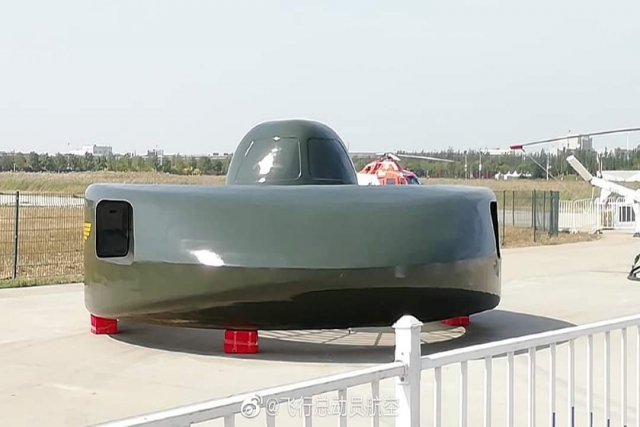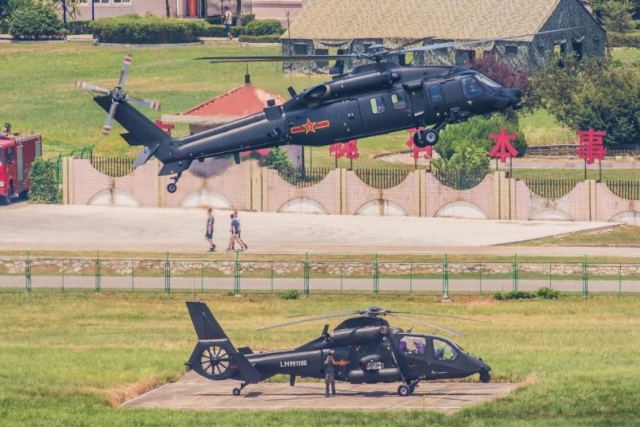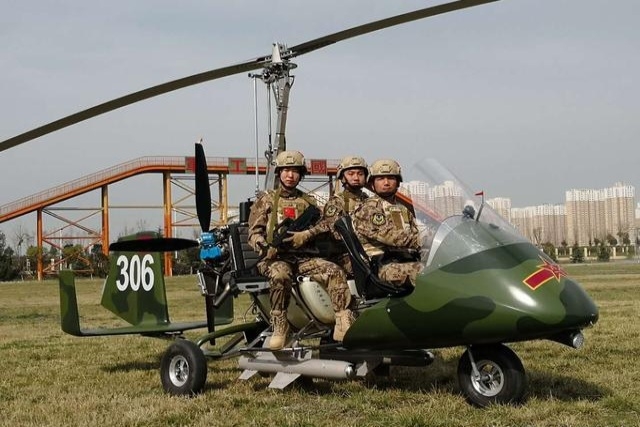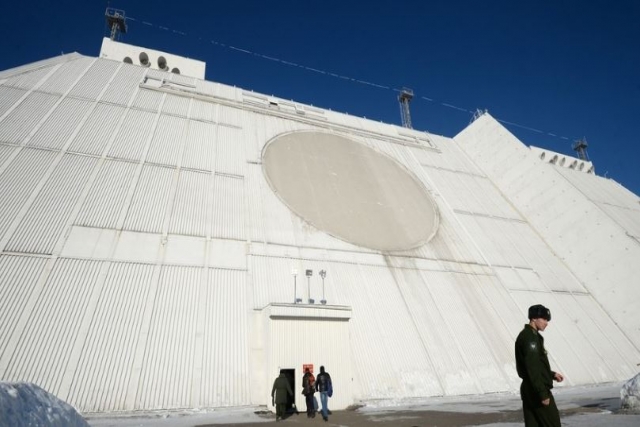China Unveils Weird, Saucer-Shaped Armed Helicopter

A mock-up of a strange, saucer-shaped armed helicopter was displayed at the China Helicopter Exposition in Tianjin on October 10.
Dubbed "Super Great White Shark," the aircraft is circular and appears to have a cockpit in the center, with a huge rotary blade surrounding the pilots. The prototype does not have cockpit glass, but the plastic body clearly indicates where it would be.
A crude translation of a placard next to the flying saucer helicopter prototype describes it as an armed helicopter with a composite wing-body designed for the future digital information battlefield, reports The Drive.
According to the information given out in the placard, the aircraft incorporates "excellent" design technologies of AH-64 Apache, CH-53 Sea Stallion, Ka-52 and Mi-26 helicopters. It is unclear exactly how it relates to the named machines- two of them are gunships while the other two are transport helicopters.

The "flying saucer" adopts blended wing body design. A new type of high-speed helicopter with a conceptual design of propeller blades has been applied in helicopter design.
The majority of the top of the main fuselage is open, implying that the center portion is simply a large lift fan. This would fit with the technical specifications on the placard that say it has a "main rotor" that is just over 16 feet in diameter, the report stated.
The Super Great White Shark model has two sets of air intakes and exhausts positioned laterally for what would likely be jet engines providing forward thrust. They might also supply power in some fashion to drive the main lift fan in the vertical takeoff and landing mode.
The signs also provide an infographic on the helicopter’s supposed interior; according to the pictures, the machine is supposed to be piloted by two people sitting next to each other, and is also supposed to be armed with at least two different missile types.
This is not the first machine of its kind. There are long-running rumors of Nazi Germany experimenting with “flying saucer” aircraft design. During the Cold War, the US repeatedly attempted to construct a disc-shaped vertical takeoff aircraft. In the 1950s, Avro Canada worked on behalf of the US military on the so-called Project 1794, which closely resembles the Chinese machine: a single-seat cockpit surrounded by a large turbine. The work culminated in the creation of the Avrocar, in which the turbine was put into center, and pilots sat in separate cockpits on the opposite sides of the vehicle. However, the disc-shaped aircraft was proven too unstable to conduct a flight higher than 1 meter above ground, or faster than 50 km/h, and the concept was eventually abandoned.












